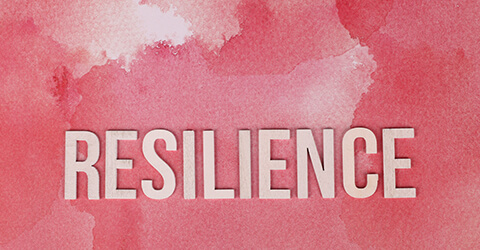COVID-19 isn’t the first event to disrupt businesses and won’t be the last, from the Great Depression in 1929 to the 2008 Great Recession. The corporate world has always effectively dealt with the crisis that has led to spectacular products due to the fiber of resiliency embedded into specific organizations that pivoted to disrupt the market. Yet, somehow some businesses are still grappling to adjust and move in a new direction that would be better suited to deal with the pandemic. Unemployment in the U.S. has climbed to nearly 15%, the highest level since the Depression and roughly doubled during the 2008 recession. While thousands of small businesses are scrambling for federal financial assistance. This is where resiliency can benefit organizations.
Why Is Resiliency Necessary?
Resilience allows companies to adapt quickly to disruptions, maintain continuous business operations and safeguard people, assets and brand equity. Resilient companies have the advantage to survive an economic slowdown and ride out the uncertainty. For example, in the case of Airbnb, a company well-known for its resilient nature quickly pivoted to meet the needs of its customers. Catherine Powell, the Global Head of the brand, instantly decided to offer ‘Experiences’, which included cooking classes and hiking tours online. “This connection is essential for all Airbnb’s hosts, who are all about human connection,” said Powell. Due to this human connection element and its ability to pivot while staying true to the brand, it was one of the first few companies that headed for recovery in 2020 after enduring the first wave.
Embedding Resiliency into your organization
1. Start Resilience Training
While resilience training is often associated with athletes in high-stress situations, it has also been introduced to the corporate world to help beat burnouts and ride out the uncertainty. During the coronavirus pandemic, Google had emphasized employee health, with the company leaning heavily on ‘resilience training,’ by expanding their existing programs and creating weekly short instructional videos from athletes, coaches and psychologists, which employees watched with great frequency. This model also helped the brand stay consistent and not quiver under the weight of the crisis.
2. Set Small Goals
The book ‘Man’s Search for Meaning’ by Viktor Frankl described the life-changing moment in the nazi camp when he developed his famed meaning therapy. He recalled, “I was on my way to work one day, and I was disgusted by just how trivial my life had become. I realized that to survive; I had to find some purpose.” Although he wasn’t sure he would survive, Frankl created some concrete goals for himself. He did this by imagining himself giving a lecture after the war on the psychology of the concentration camp to help outsiders understand his grueling experience. By doing so, he succeeded in working towards these goals rather than being disappointed about the present.
3. Unlearn And Adapt
The death of Karl Wallenda is a classic example of this. In 1978, he was invited for a promotional walk in Puerto Rico, during which the world-renowned high-wire artist fell to his death while clutching his balance pole. He could have easily prevented his fall if he had dropped it by using his free hands to grab the wire. This led to the connotation of ‘dropping one’s tools’ that has now become the corporate catchphrase for unlearning, adaptation, and flexibility, all required when your context flips upside down. People and organizations alike have fallen to their death because they refused to give up something that had served them well in the past. When organizations and people alike are put under pressure, with adequate ideating and discussion, it often leads to the most disruptive ideas.
In Conclusion:
As companies have started shifting to the ‘new normal’, it is imperative to keep in mind that change is the only constant in the business world. While the pandemic battle seems over, there will always be new storms brewing and in the words of Peter Drucker, “The greatest danger in times of turbulence is not the turbulence—it is to act with yesterday’s logic.”








